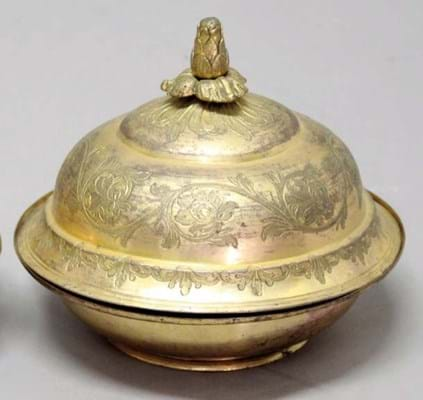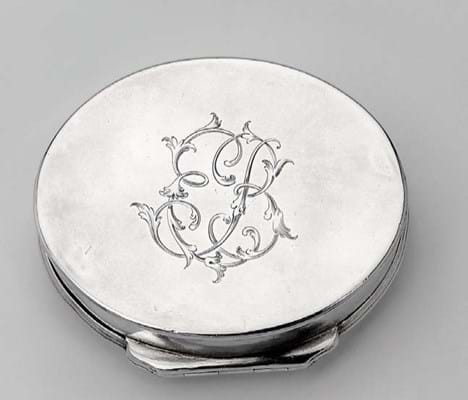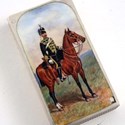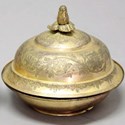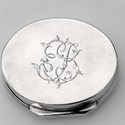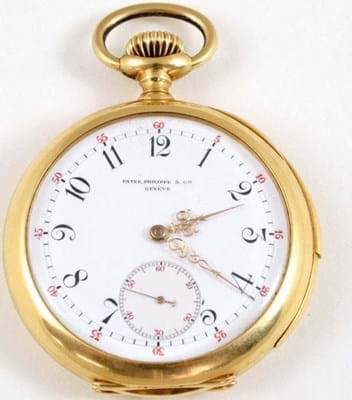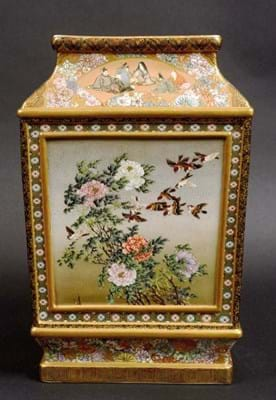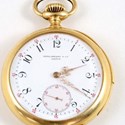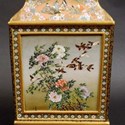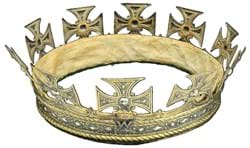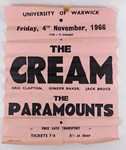“An amazing start to the year,” said managing director Helen Carless of the sale, at which 85% of the 2500 lots got away to total £1.25m.
“Each of our eight dedicated specialists is reporting strong demand from vendors as well as buyers.”
Among those specialists was silver expert Alex Butcher, for whom the January 15 sale was the final part of a two-year project since he first saw the remarkable John and Patricia McKenzie collection of some 4000 vesta cases.
In every conceivable material from gold to straw work and porcelain to vulcanite, they included every form of decoration from armorials to erotica and sportsmen and women to militaria.
Although most were made in England, they were also produced in the US and across Europe to Russia, the Far East and Australia, and many incorporated other functions such as whistles, penknives or watches.
More than half were sold in January 2017. This final 1500-strong tranche, offered in 382 lots, enjoyed a selling rate of more than 90% and totalled £75,650.
Top-seller was a 2¼in (5.5cm) long silver case by by Sampson Mordan & Co, London 1892, enamelled with a mounted hussar in a hilly landscape.
Estimated at £400-500, it sold at £1550 to a dealer. As in many winning trade bids, he was, Butcher suspected, buying for a client rather than stock.
Three-figure bidding, generally well above estimate, was the order of the day and only an idea of the range can be given here.
A Birmingham 1894 silver case by Stokes & Ireland enamelled with a lady golfer made £520 and a c.1895 French ‘Naughty Nineties’ brass case enamelled to the exterior with L’Ete, a pretty female holding a parasol, and, to the interior, L’Hiver, when she lifts her skirt to warm her posterior by a fire, took £220.
From further afield, a c.1880 Vienna silver case with slowmatch holder and cigar cutter took £320.
A Russian silver gilt and cloisonné enamelled case, probably by Fedor Ruckert 1908-17, made £420.
Two late 19th-early 20th century Japanese brass cases, one with a pipe-smoking monkey and a comic figure, the other with a fat grumpy man holding a scroll, sold at £370. Two similarly dated Australian cases made from nuts and mounted in gold, silver and nickel made £410.
Bulldog vesta
More small work and boxes featured among the 670 lots of silver and vertu offered the following day, 89% of which sold, garnering £257,490. Most bids came from UK and US collectors.
Best of the vesta cases was a 1900-20 piece marked Sterling 935 and enamelled with a British bulldog on a Union Jack at the shoreline. It tripled the estimate at £1100.
From a collection of silver snuff boxes three 18th century examples stood out.
Top-seller was a George II/III 3in (7.5cm) long slightly domed oval box with six compartments by Benjamin Stokes, Dublin, c.1760. Engraved with a crest and coat of arms and estimated at £500-600, it went to an Irish collector at £3000.
An unmarked George II circular snuff box with three lidded compartments, one engraved with the crest and coronet of a viscount, doubled hopes at £1700.
A Queen Anne/George I silver-mounted tortoiseshell box with a relief-moulded portrait of the Duke of Marlborough tripled the mid estimate at £1650.
Earliest of the boxes was a c.1680, probably London, 1¾in (4.5cm) spice box engraved with a flower and a boy blowing a horn which took £820.
Early Patek Philippe
Highest prices, unsurprisingly, came for the 840 lots of jewellery, 19th-20th century design and ceramics which were offered on January 18. Of these, 82% sold for a hammer total of £466,560.
Neither was it surprising to see a Patek Philippe watch figuring prominently on the sales sheet. However, this was rather more interesting than many of the watches-as-investments purchases in that it dated from the first third of the illustrious maker’s existence.
The 1904 pocket watch bore the arms of Samuelson impaling Godden to the 2in (5.5m) diameter outer case.
Along with its original wooden box, spare glass and 9ct gold albert chain, it was consigned by a family descendant and sold to an overseas bidder at £15,000 against an £8000- 12,000 estimate.
One of the more encouraging signs in this sale was the continuing comeback of quality Japanese material. A 19in (48cm) tall cloisonné baluster vase decorated with pigeons set the pace when a UK dealer bid £8000 – 10 times the lower estimate.
Next up was a12½in (32cm) tall Meiji Satsuma square-section vase.
With panels including an imperial procession, birds, flowers and hunting party, it bore the iron red and gilt seal mark for Kinkozan tsukuru. The famous Kinkozan family factory was founded in 1645 but its main production period was from 1875- 1927, after which it closed.
Estimated at £2000-3000, the vase attracted Japanese interest and a number of phone bidders before selling to ‘a private overseas collector’ at £10,500.
Alabaster carving
The week culminated on January 19 with 643 lots of fine art (also see Art Market), furniture, clocks and rugs, 79% of which sold, adding a very satisfactory £450,000 to the series total.
The eye-catchers were two lots outside the main categories – an alabaster carving and a pair of Continental metal dishes.
The 11½ x 12½in (29 x 32cm) carving, catalogued as probably Nottingham and 16th-17th century, depicted a scene possibly of the Last Supper. It had restoration work, but looked very tempting against a £600- 800 estimate. English alabaster work from this period, particularly by the skilled artisans around Nottingham, has been achieving wider admiration for a few years now and this example was a UK trade buy at £3600.
The 8in (20cm) diameter metal dishes with domed covers featuring chased floral decoration and flowerbud finials presented some cataloguing problems and were estimated at £300-500.
After they sold to the European trade at £8000, the consensus was that they were 18th century Turkish tambak dishes.
Frodsham and furniture
Best of the clocks was a professionally restored Frodsham marine chronometer in a brass-bound rosewood case which doubled the estimate at £6400.
There is talk among auctioneers and dealers of a revival in the fortunes of traditional furniture, but other observers note that so far this is taking the form of occasional items standing out from the familiar three-figure herd.
At Crewkerne this role was filled by a 3ft 1in (95cm) wide William and Mary oyster veneered and sycamore crossbanded chest of five drawers . Guided at £600-800, it sold to a Continental bidder at £5100.
Going to private UK buyers, a mid-19th century satinwood and kingwood bonheur de jour quadrupled expectations at £2800; an 18th century, 5ft 5in (1.65m) wide bleached elm settle estimated at £250-350 made £2300; and a 11½in (29cm) high, early 20th century oak country house post box-cum-letter rack with brass mounts went at a 10-times-estimate at £2500.


